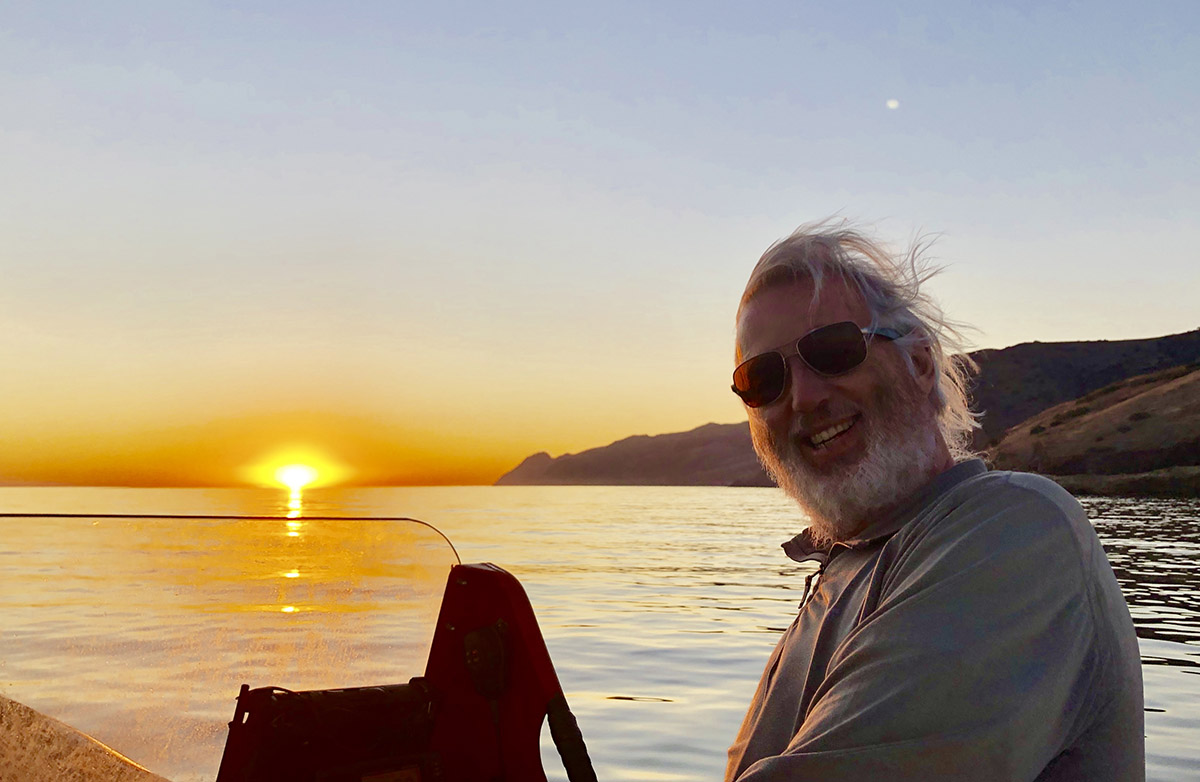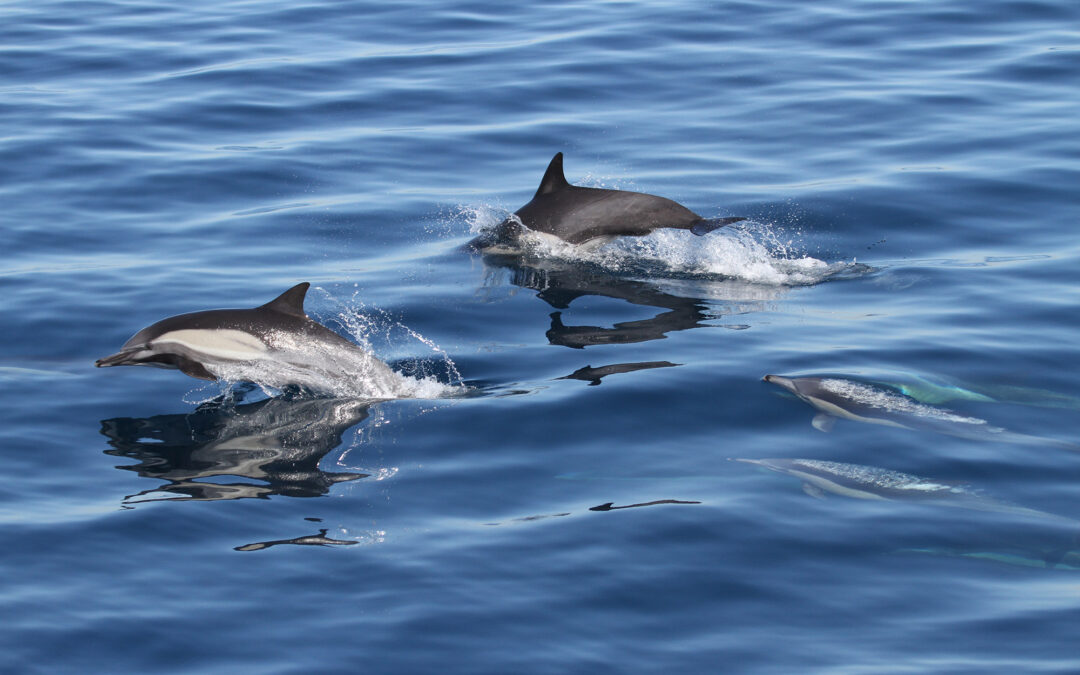Our research team collaborating on a Behavioral and Physiological Response Study (BPRS) using integrated methods of monitoring the behavior and potential responses of groups of different dolphin species wrapped up yesterday with several final successes. We successfully coordinated our experimental studies while monitoring not one but two different species (short-beaked common and Risso’s dolphins) in different groups at specified ranges from ongoing active sonar training operations with real Navy sources. With careful and much-appreciated coordination from Navy source operators, we managed to conduct these first-ever controlled exposure experiments (CEEs) with real Navy sonar systems this week, this adding to our success from last week.
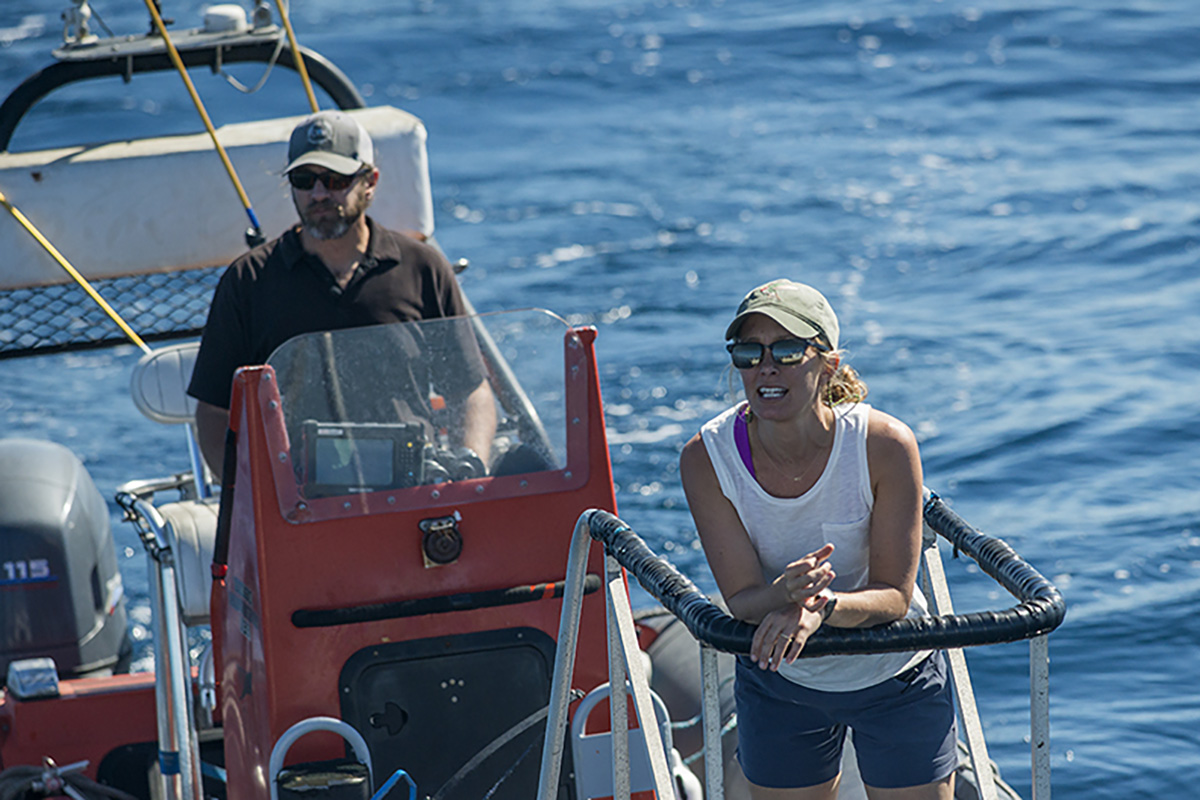
Tagless Beahvioral Response Study at Catalina Island, CA, aboard the Magician, October 22, 2019. Taken under NOAA permit. © Bernardo Alps/PHOTOCETUS. All rights reserved
This marks the end of the first (of four) field phases of this new and totally unique experimental study. We will have additional field work in June and October of 2020 and then a final field effort in 2021 to build the sample sizes needed to systematically disentangle the complex nature of behavioral and physiological responses in these different species in different contexts. Though we had just eight field days and one was totally blown out from the very strong Santa Ana winds currently vexing southern California, we successfully conducted 11 CEEs. Six of these involved experimental sonar transmissions (two being from real Navy sonars dipped from hovering helicopters) and five were no-sonar controls that are critical to be able to experimentally associate sonar exposure with potential response. Most of our CEEs this time were on our highest priority species – short- and long-beaked common dolphins – but we also worked with bottlenose dolphins in a control sequence and the CEE from yesterday included a secondary group of Risso’s monitored visually – the first ever such experiment with this species.
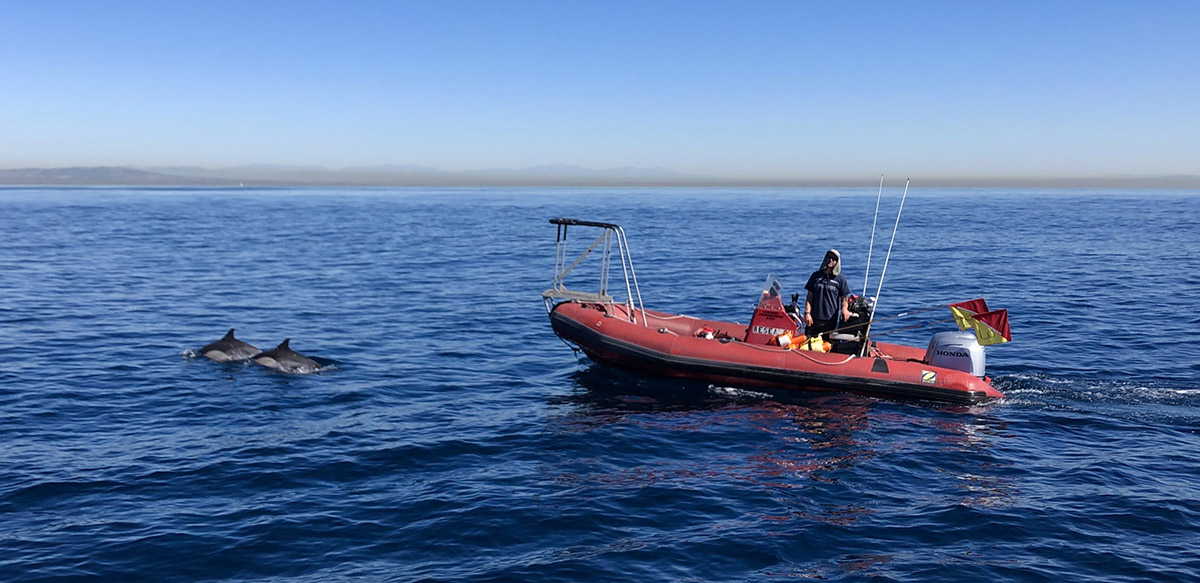
We will be processing and analyzing these data over the winter and spring, but look for updates and upcoming presentations of this work, including a full presentation on this project at the World Marine Mammal Science Conference in Barcelona, Spain in December.
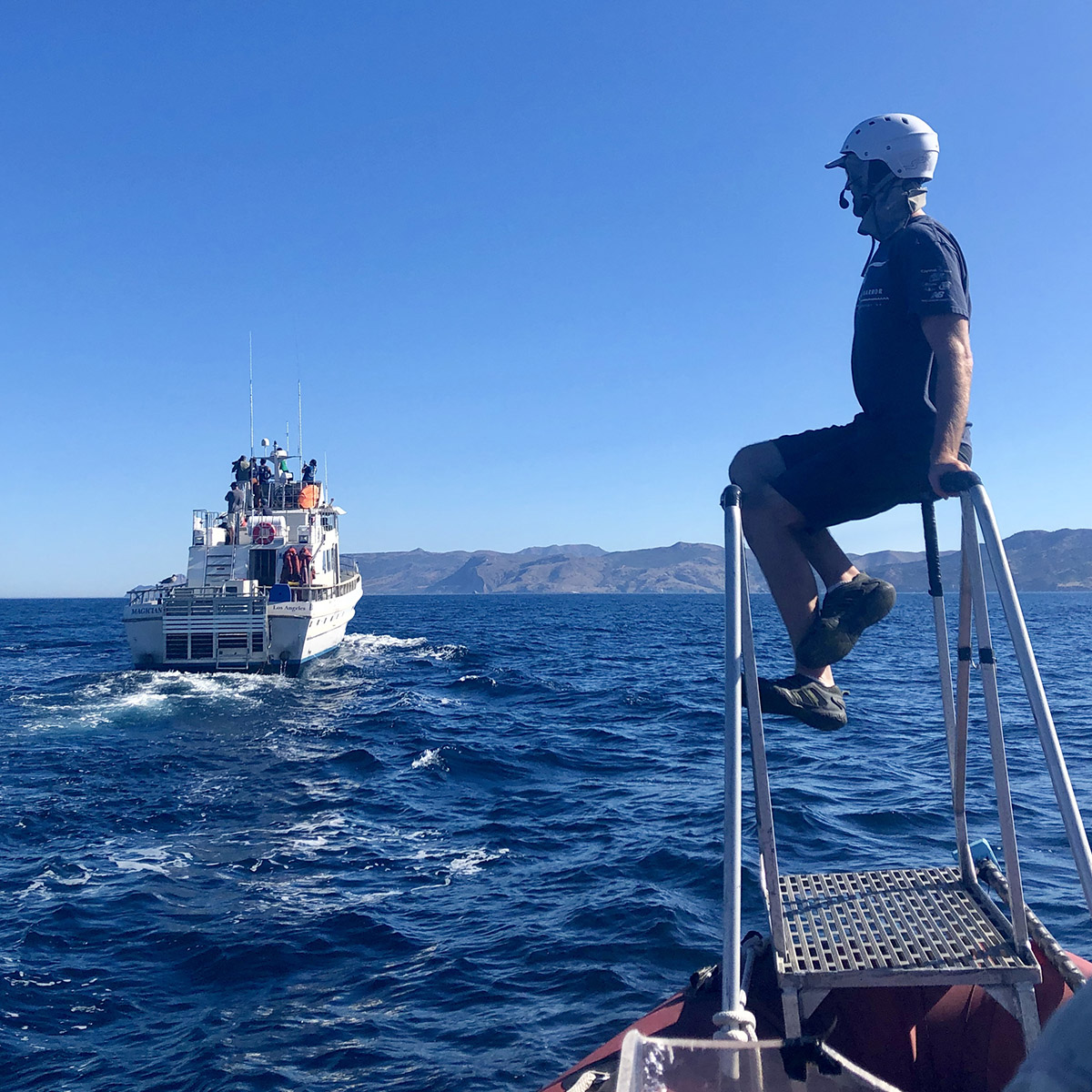
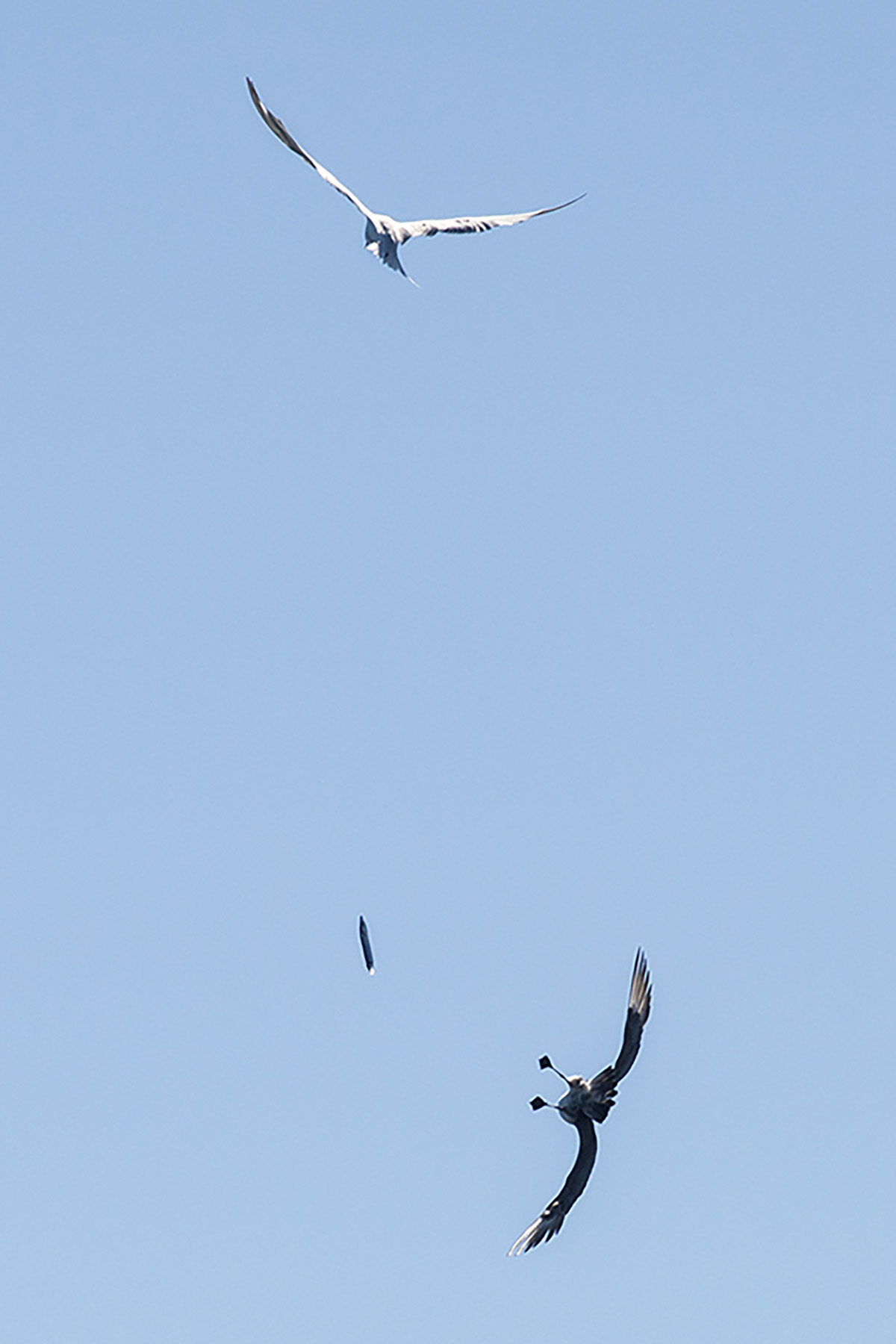
Tagless Beahvioral Response Study at Catalina Island, CA, aboard the Magician, October 22, 2019. Taken under NOAA permit. © Bernardo Alps/PHOTOCETUS. All rights reserved
